10/24/2023
Are SUVs worth it (or is the madness getting out of hand?)
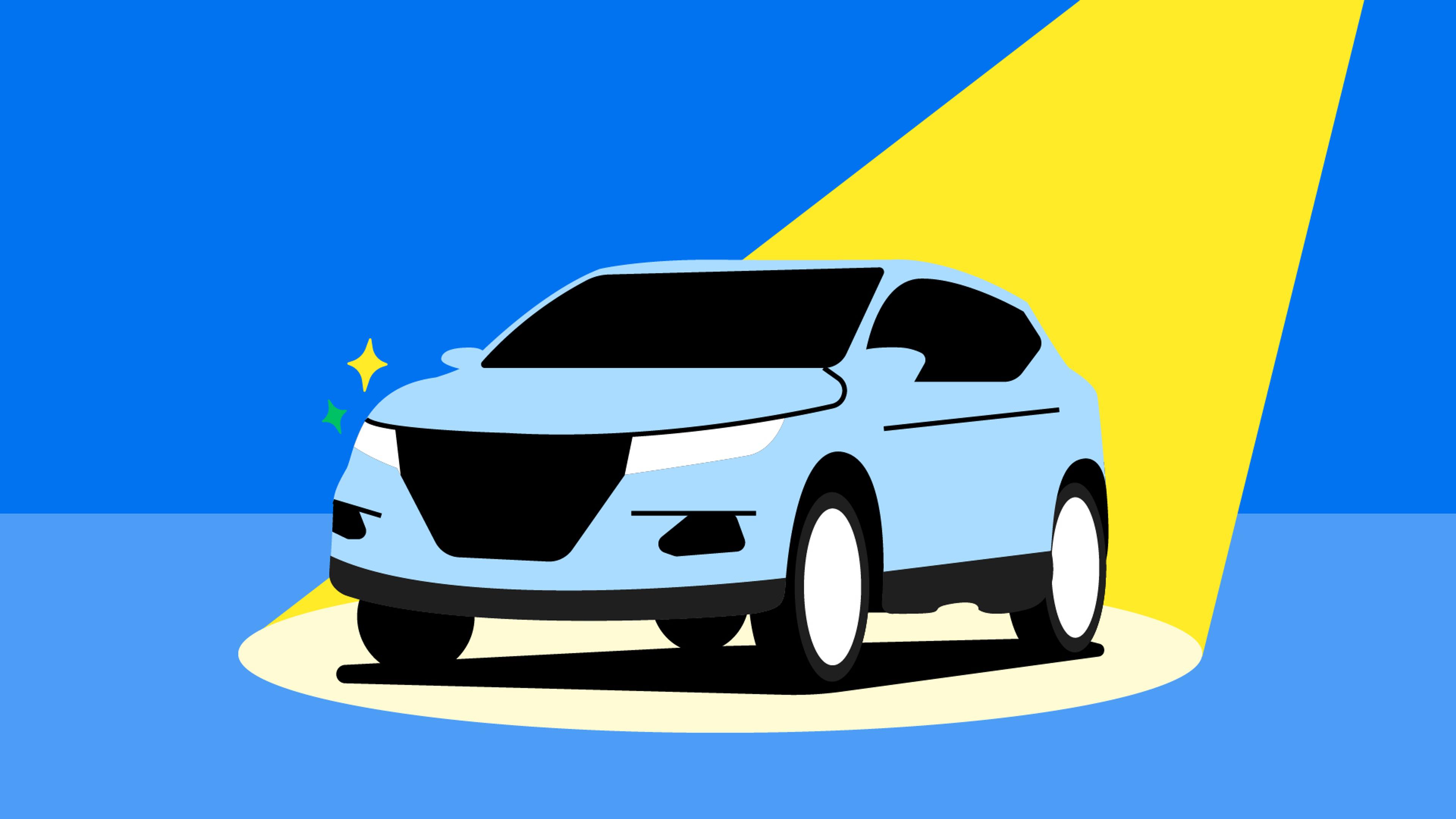
“I want to have better visibility and be safe” is one of the most common reasons or excuses to buy an SUV. These oversized vehicles may create the illusion you're driving a tank, which provides you with tons of room, invincible safety features, and great off-roading capabilities.
However, once you remove those rose-tinted glasses, it becomes evident that SUVs, crossovers, and pickup trucks have significant drawbacks. A high rollover chance, deadly blind spots, and high fatality rates are only a few risks that many SUV owners don’t know they’re facing.
Let’s take a deeper look at the booming popularity of these oversized cars, and try to answer the question – are SUVs worth it?

Looking for a reliable car?
A well-maintained and undamaged car is the most reliable! Check any VIN code to make sure you're not buying a wreck:
How did SUVs take over the automotive market?
40-50 years ago, roads were dominated by saloons, hatchbacks, and station wagons. Only a few pickup trucks could be seen near farms and construction sites. Fast forward to today, 80% of car sales in America are SUVs and pickups, making them a top choice for most drivers.
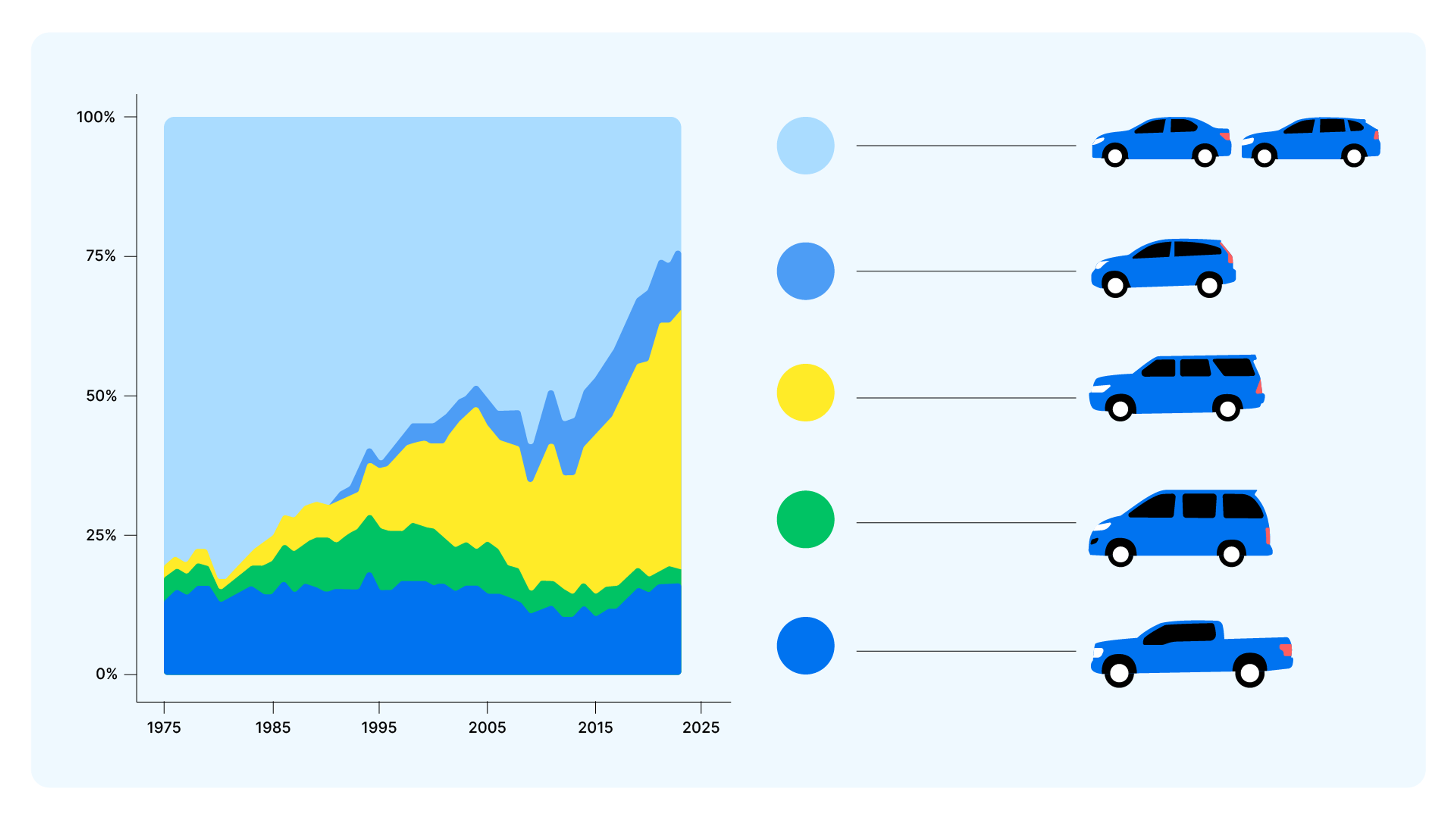
The 2023 EPA Automotive Trends Report reveals how the U.S. vehicle production share has changed over the years. In 1975, over 75% of produced vehicles were sedans and station wagons, while in 2022, 63% of all new vehicles were trucks. According to the U.S. Environmental Protection Agency’s experts, the truck share should increase in the upcoming years.
How did that happen?
The history of SUVs began during WW2 with the introduction of a robust Willys Jeep, which was later modified and sold as a legal road vehicle. Soon after the popularity of the Willys Jeep picked up, the British introduced the Land Rover Defender, which was more practical and offered more features for farmers and workers.
In 1951, the Korean War created a demand for robust, reliable, and efficient vehicles, leading to the birth of the legendary Toyota Land Cruiser. All these and many other SUVs attracted buyers from all over the world, offering new driving experiences and benefits.
However, the main turning point for SUVs and pickup trucks was during the 1990s.
People noticed that SUVs had it all – the practicality of a van, the comfort of a luxury saloon, and the capabilities of an off-road truck. It seemed that buyers didn’t have to sacrifice anything other than money. On top of that, sitting higher up was comfortable and ensured a sense of security.
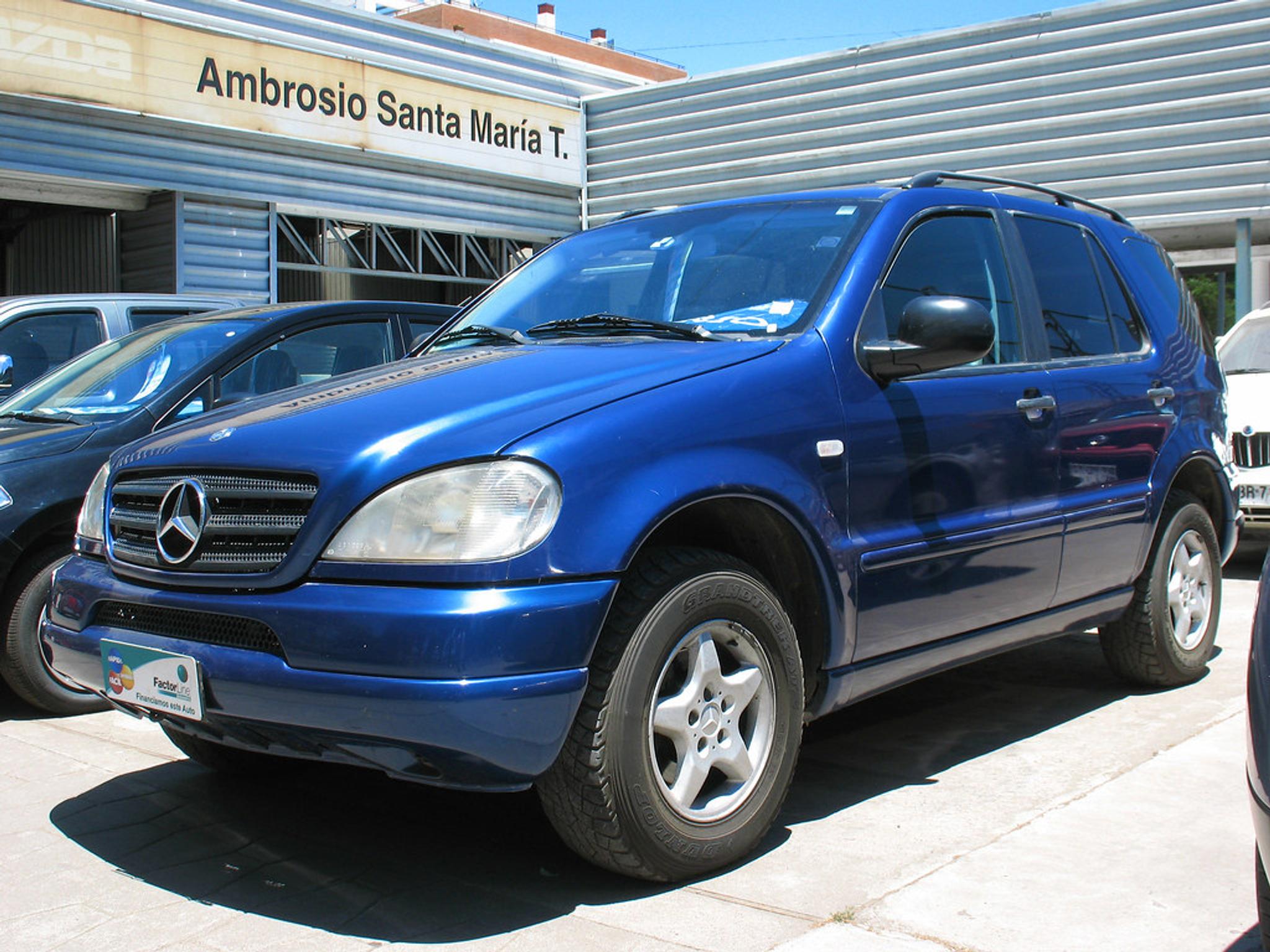
As more people chose these cars, more car makers began introducing light trucks and SUVs. The 1997 Mercedes-Benz M-Class, 1999 BMW X5, and the 1998 Cadillac Escalade are just a few examples.
The demand for these beefy automobiles was high, and car makers also found SUVs appealing for other reasons. Most importantly, SUVs justify higher price tags and have much higher maintenance costs.
BMW demonstrates the result quite well: the company didn’t offer a single SUV in the 90s, and now they offer 11. The demand has continued to grow. Even in the EU, 49% of 2022 new car sales consisted of SUVs and crossovers – a 35% increase since 2011, and the trend isn’t slowing down.
SUVs pose great risks to everyone, even their owners
Most SUV buyers think SUVs are a win-win purchase because they're more comfortable, practical, and also safer for their families.
Unfortunately, while SUVs may be safer in some cases, it's not the full story. Since they’re much bigger and heavier (40% heavier than regular cars, on average), their handling and stopping distance are both very poor.
SUVs flip over more easily
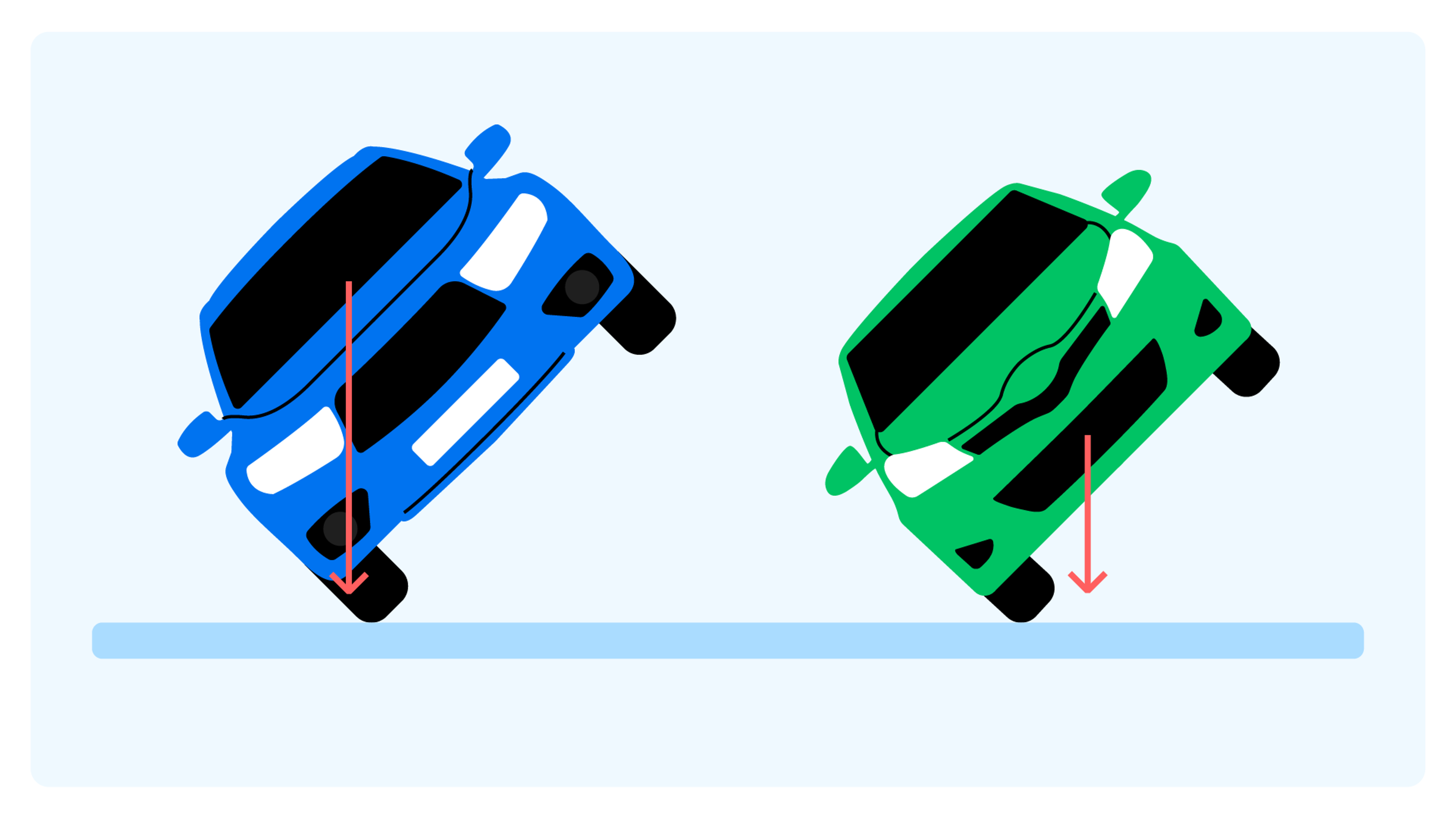
One of the biggest dangers when driving an SUV is the higher chance of a rollover. Their center of gravity is way higher compared to regular cars, therefore, it’s more likely that an SUV will flip over when skidding or after an impact.
In fact, over 90% of SUV rollover accidents involve only one vehicle, meaning that they often occur when avoiding animals or losing control due to bad road conditions.
Visibility is worse, not better
SUV drivers praise the visibility because “you can see further up,” but seeing further isn’t that necessary, especially when the view is already obstructed by other large vehicles. The high seating position and excessive vehicle dimensions limit the visibility in front of the hood.

A few news portals have performed an interesting test to find out how many kids could sit in front of an SUV in a row without the driver seeing them. The result is terrifying – only the 9th kid was visible. Thousands of kids are being injured in frontover accidents each year, and many of them happen because parents don’t see their children playing in the driveway due to huge SUV hoods.
Dangerous impact zones
Another great issue with large vehicles is their high bumper position. Since they’re higher than in regular cars, impacts aren’t equal in case of an accident, therefore, many people are forced to switch to an SUV just because they don’t want to get swept away by a monstrous truck.
For many years, SUVs weren’t impacted by bumper height regulations, but the situation is a bit better nowadays. The front bumpers of large SUVs cannot be higher than 27-28 inches from the ground, which is 5-6 inches more than the requirement for regular passenger cars. However, since these are the maximum allowed heights, the actual differences between bumper heights tend to be much bigger, creating unequal impact points.
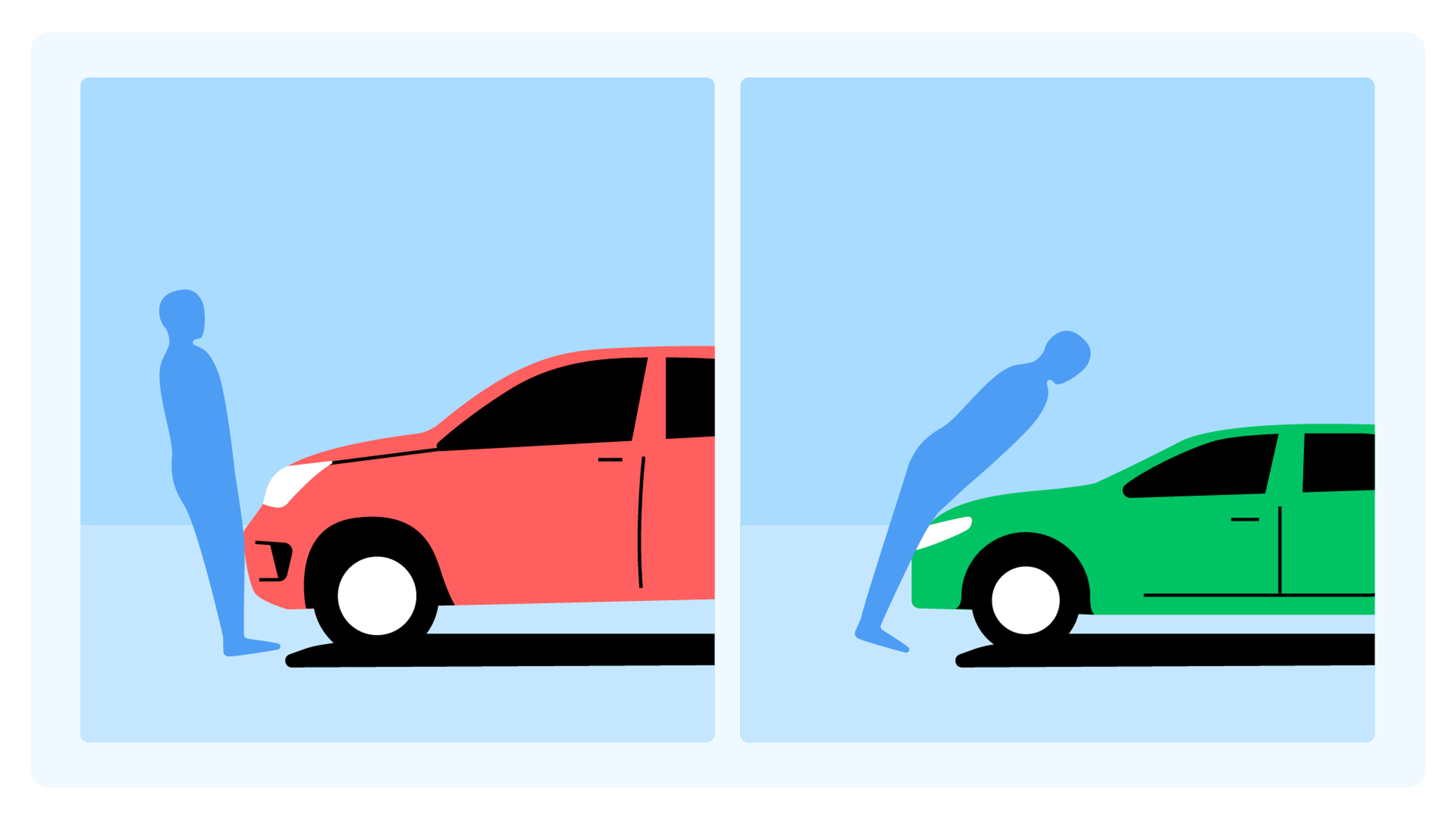
Due to higher and bigger impact zones, pedestrians are 2-3 times more likely to die when hit by an SUV compared to a regular car. The design of regular cars is relatively forgiving in such cases because pedestrians are thrown onto the hood during an impact. As a result, people mostly end up with lower body injuries.
Meanwhile, the front area of SUVs is much higher, and pedestrians often experience deadly impacts or are thrown under the vehicle.
Most SUVs don’t make sense
Even with such a variety to choose from, an SUV is rarely the perfect option. Regardless of what SUV commercials and other owners say, most pickup trucks, crossovers, and SUVs just don’t make sense.
SUVs aren’t the safe, robust, practical, and capable all-rounders many people think they are. Most SUVs are slower than regular cars, often use twice as much fuel, are more expensive to maintain, perform poorly off-road, and aren’t very practical. In short, SUVs do most of the things regular station wagons or vans do, but with higher maintenance costs and worse handling.
Also, even though car manufacturers tend to use “greener” and lighter materials to contribute to a cleaner environment, the average weight of a car has increased by about 100 kg during the last decade, mostly because of SUVs.
How do SUVs and crossovers affect our daily lives?
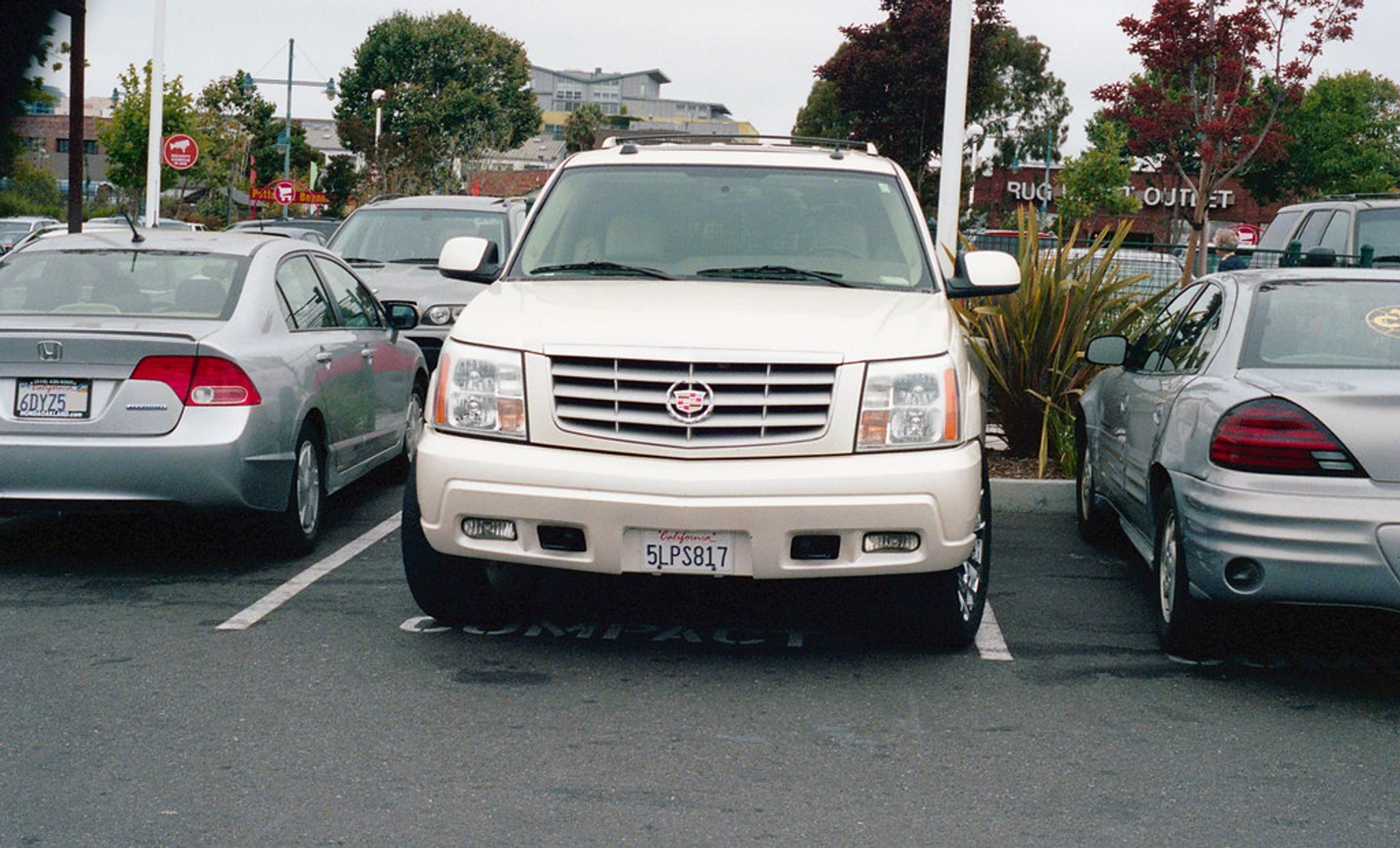
Drivers often complain about roads being too narrow, cyclists taking up too much space, and the lack of parking lots. While we may think the reason for these problems is that governments aren’t prepared for the rapid growth of vehicles on roads, in fact one of the main reasons is that many vehicles are much bigger than they should be.
Here are some of the things that have happened / increased due to the increased popularity of SUVs:
- More fuel consumption
- SUV drivers need more tires and spare parts
- SUVs are the 2nd largest contributor to the increase in global emissions
- Road visibility is worse due to oversized vehicles on the roads
- Fewer vehicles fit in parking lots and on roads
- People spend more on car insurance
Large vehicles also change our point of view. SUV drivers tend to think they’re in a “defensive capsule,” therefore, they often take higher risks and skip various basic precautions. While a regular car has a much shorter braking distance, many people still choose SUVs, explaining that some accidents can’t be avoided and they want to be safe in case they happen. But the truth is that many accidents happen because of how unsafe SUVs actually are.
Moreover, repairing a damaged SUV tends to be costlier than repairing a regular car because of more expensive parts and complicated structure. For example, data from our vehicle history reports shows that the average repair cost of the Ford F-Series (a pickup truck) after an accident is $10,116, and $4,907 for the Ford Fusion (a mid-size sedan). $3,307 for the Honda Civic (a compact car), and $6,648 for the Honda CR-V (a compact crossover SUV).
While there are exceptions, the general cost of labor and parts is higher for heavier and more complicated vehicles.

Check your VIN
Avoid costly problems by checking a vehicle's history. Get a report instantly!
Steep depreciation
Since the manufacturing of SUVs is more expensive and people are obsessed with this kind of vehicle, their MSRP is generally higher than regular passenger cars’. SUVs and crossovers are more complex and cost more to maintain, therefore, their ownership often becomes too problematic after a few years, significantly decreasing the vehicle's value.
However, if you’re interested in such vehicles, you should know which SUVs hold their value the best. Here are some of the best options to choose from:
- Honda CR-V
- Toyota RAV4
- Subaru Crosstrek
- Lexus NX
- Jeep Wrangler
- Toyota Land Cruiser
Most of these SUVs offer great reliability, which is essential for avoiding huge depreciation. Hybrid SUVs can also be viable options, offering better reliability and fuel efficiency. Still, whether SUVs are worth it depends on your needs and lifestyle, so set your priorities straight and avoid impulse buying.
The upcoming vehicle electrification doesn’t solve the problem
Society wants to ditch fossil fuels and go electric, but can’t let go of the desire to sit behind the wheel of a beefy vehicle.
The main problem with electric cars is their limited range and expensive batteries. SUVs require even more powerful motors and more li-on batteries to acquire decent range. Moreover, they need better brakes, stronger suspensions, and other adjustments, making them exceptionally expensive and heavy.
For instance, Mercedes-Benz EQS, Ford F-150 Lightning Extended-Range, and some other electric SUVs weigh almost 3 tons and use twice the average size of an EV battery.
The real reason why people keep buying SUVs
You may think that an SUV will prepare you for everything Mother Nature throws at you. However, even most farmers and construction workers don’t use sports utility or pickup trucks because they cost too much, use too much fuel, and aren’t rugged enough for work.
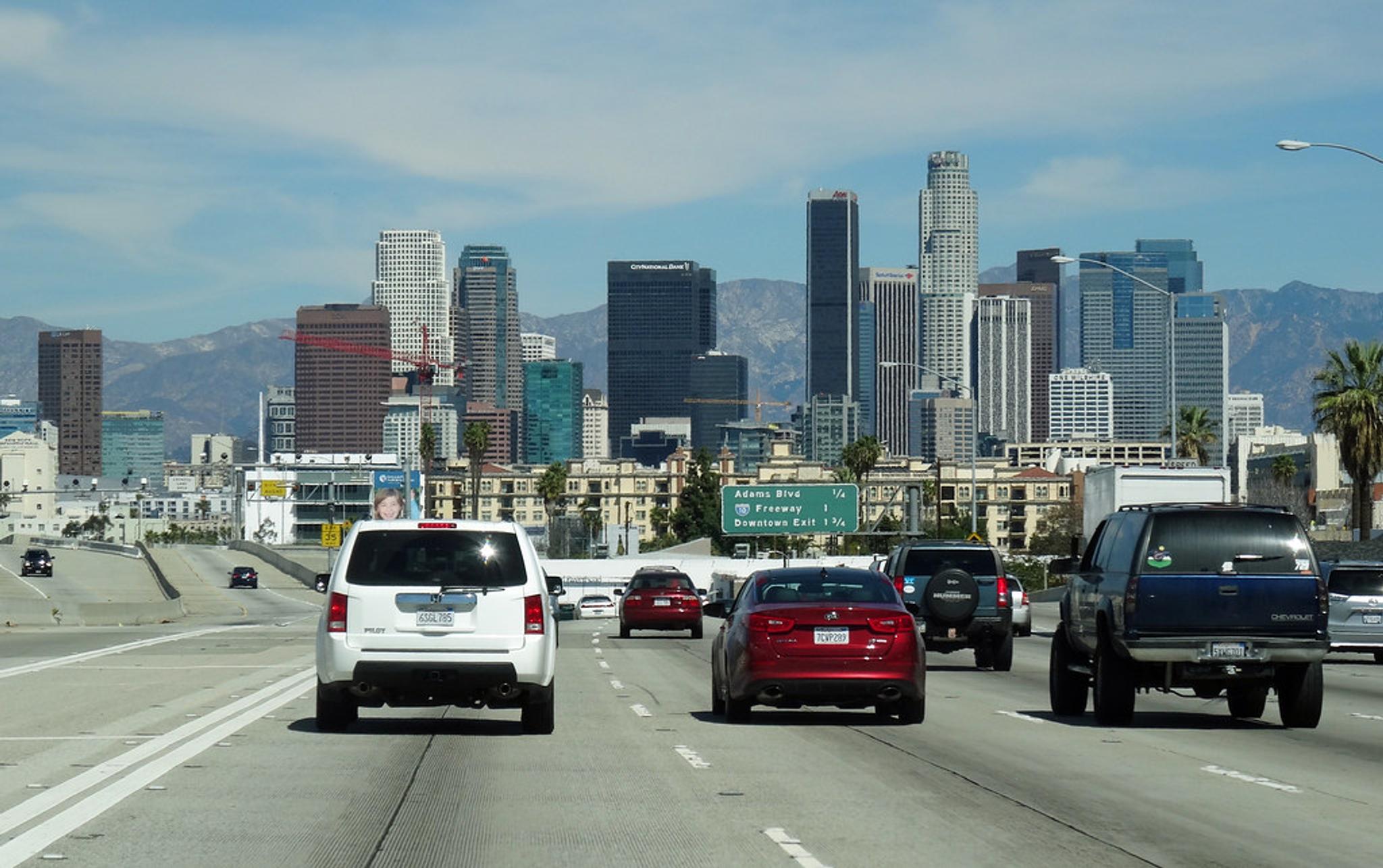
Our mindsets are deeply affected by years of carmakers’ marketing strategies: SUVs help people escape from a boring reality, and make them feel safer. Notice how boldly SUV manufacturers name their models: Explorer, Navigator, Pathfinder, Renegade, or Escape. The issue is most of these vehicles will be driven in towns and traffic jams.
Before you go and buy an SUV, make sure you actually need this vehicle, not just love the idea of having it.
